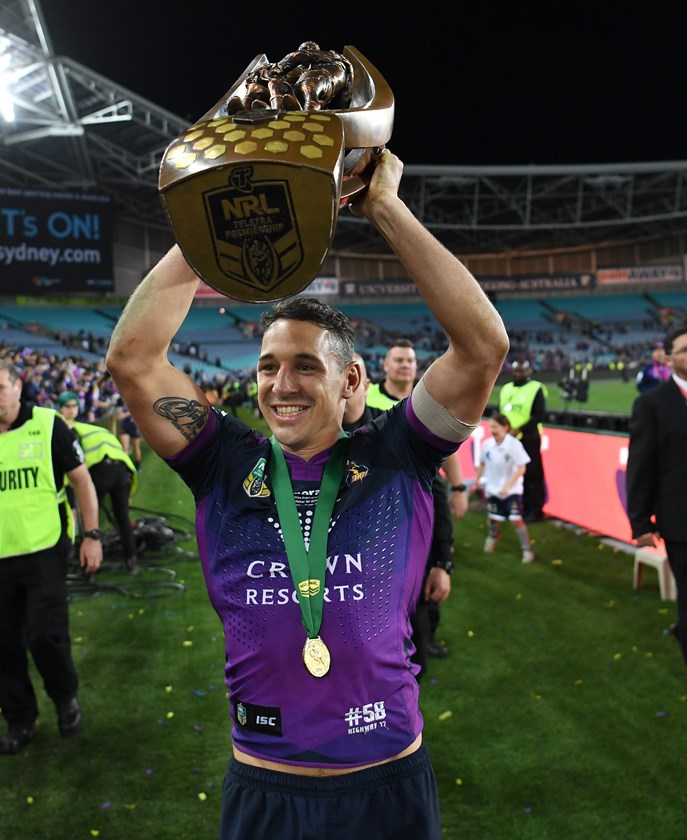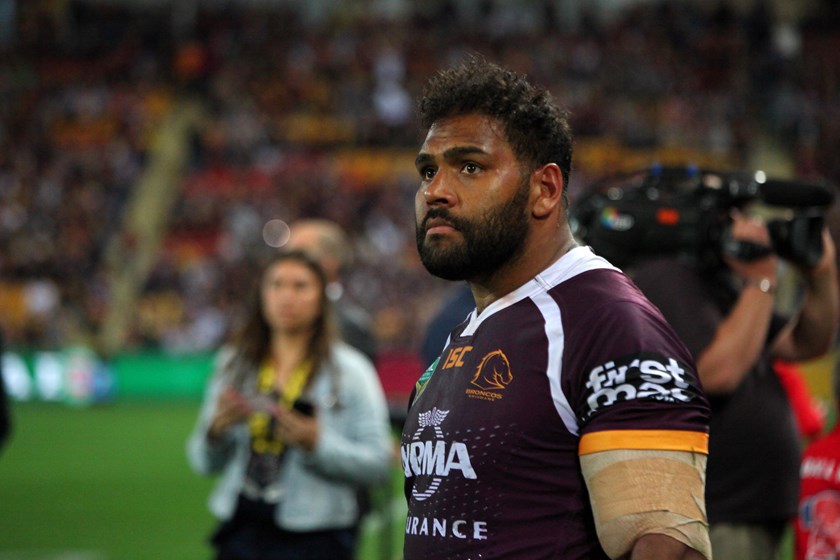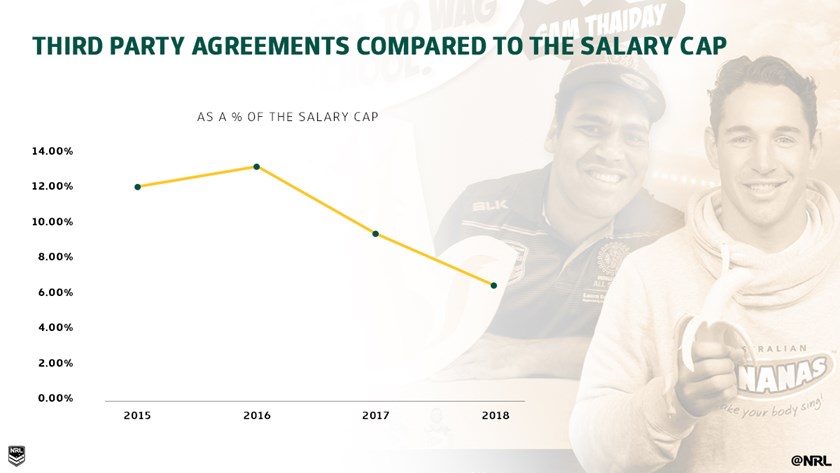NRL talking to clubs to publish figures on TPA's
The NRL will retain third-party agreements outside the salary cap but is considering publishing the total amount each club's players earn through private sponsorship deals.
NRL chief operating officer Nick Weeks said player's individual earnings would not be disclosed but he believes greater transparency would help dispel many of the concerns about the amount some clubs are able to attract in third-party agreements.
Club chief executives were last week shown a breakdown of third-party agreements, which revealed only three clubs had players whose combined earnings from private sponsorships exceeded $500,000 in 2017.
The club with the most valuable private sponsorship deals - understood to be Melbourne Storm - has players earning a total of $788,000, while Brisbane Broncos and Penrith Panthers stars have combined third party agreements of about $550,000 each.
That order is likely to change this season following the departures of Matt Moylan and Bryce Cartwright from the Panthers.
The fourth club, believed to be based outside of Sydney, has third party agreements totalling just above $300,000, while another two had private deals worth more than $200,000 each and six clubs were below $100,000, with the lowest being $26,000.
Sydney Roosters are believed to be mid-table.
Melbourne Storm fullback Billy Slater.

Gregg Porteous / NRL Photos
"There is a lot of misinformation around about third-party agreements and part of our job as the governing body is to address that," Weeks said. "We have got some discussions with the clubs and players to advance that.
"We are open to a range of measures to increase understanding and transparency around the cap, including potentially making those figures available."
Those discussions revolve around the publication of the amount each club's star players earn through third-party agreements, which include:
- Marquee player allowances, capped at $600,000 per club;
- Whole of game sponsorship leveraging, often with State of Origin sponsors or government organisations;
- Tools of trade, usually contra deals for boots or headgear; and
- Arm's-length agreements, which are private deals between players and sponsors.
The total amount of third-party agreements in 2017 was $9.6 million spread among 198 players.
Of that amount, $3.76m is paid by the private sector and goes to 93 players. However, eight players earn 50 per cent of that figure.
Among the most well-known third-party agreements are Melbourne Storm star fullback Billy Slater, with Australian Bananas and Powerade, and his club and representative captain Cameron Smith's deal with VB.
Broncos forward Sam Thaiday is another player with high profile third-party agreements and has secured deals with a number of government and indigenous organisations in Queensland as he heads towards the end of his career.
Brisbane Broncos forward Sam Thaiday.

Kylie Cox / NRL Photos
"I think it is important that private information about player remuneration is retained in confidence," Weeks said.
Since the Parramatta Eels salary cap scandal in 2016, the amount of third-party deals in comparison to the salary cap has dropped from 12% to 6%.
Private sponsorship deals comprise 53% of all third-party agreements and this is the area most likely to cause concern for the NRL salary cap auditors.
However, the fact that 83% of all private sponsorship deals are with State of Origin stars or New Zealand and England Test representatives provides comfort, while the other 17 per cent are mostly young players with a high profile.
"We've adopted some changes in recent years that have arrested some of the trends we have seen around third-party agreements," Weeks said.
"We will continue looking at ways we can refine the process but I don't see any other option which would result in a wholesale change to the current system."
Weeks said that the effectiveness of the salary cap was demonstrated by the fact that 12 clubs have won the grand final since 2000, a figure which suggests the NRL is the most closely contested competition of any football code in world sport.
"What we have seen is 75% of our teams have won the competition since 2000 and that is significantly higher than any other major sports league in this country or around the world," Weeks said.
In comparison, the percentage of winning teams over the same period in AFL is 56%, Super Rugby 50%, the NFL 34% and EPL 25%.
https://www.nrl.com/news/2018/02/19...to-publish-figures-on-third-party-agreements/

 Gregg Porteous / NRL Photos
Gregg Porteous / NRL Photos
 Kylie Cox / NRL Photos
Kylie Cox / NRL Photos
